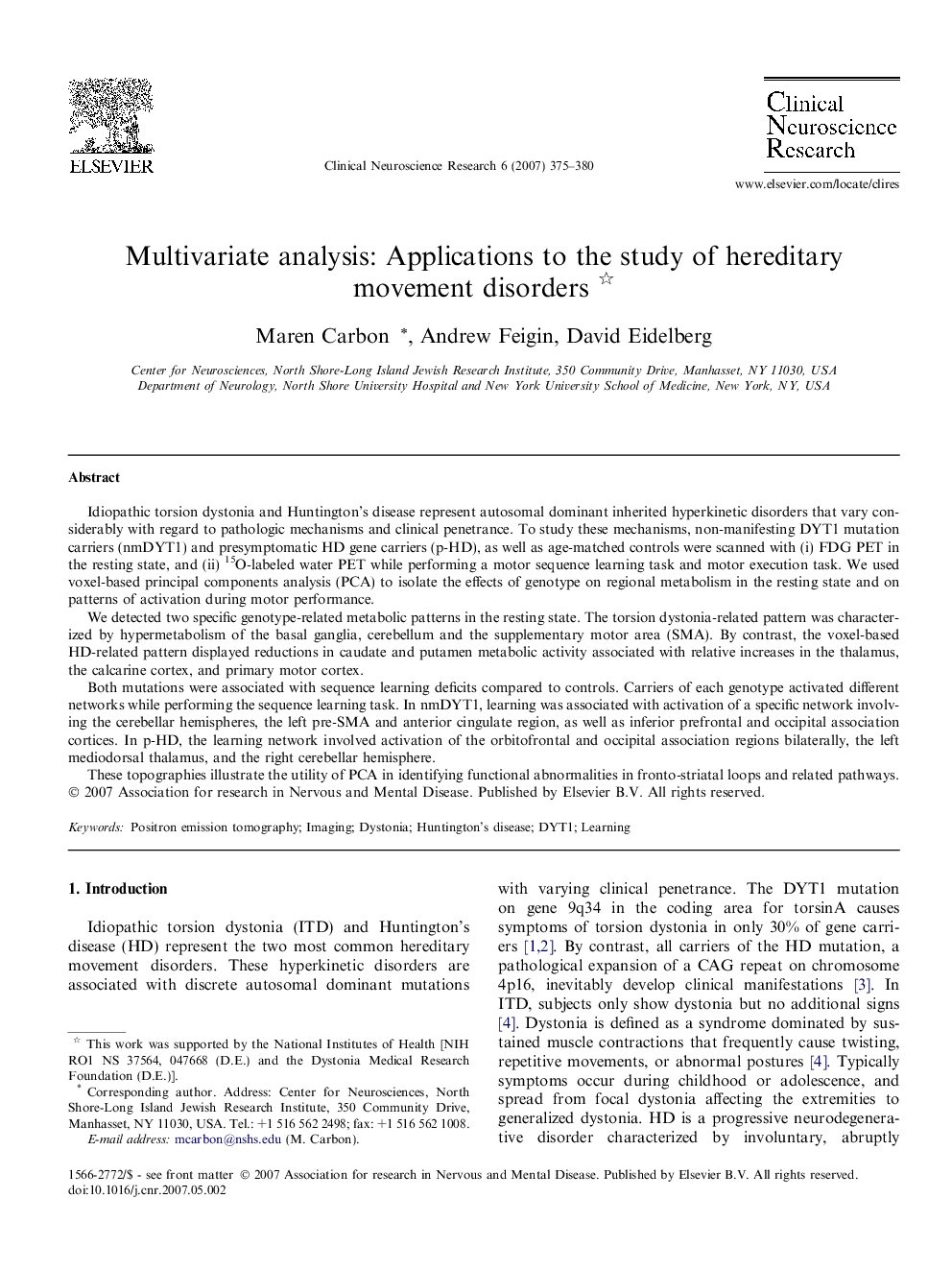| Article ID | Journal | Published Year | Pages | File Type |
|---|---|---|---|---|
| 3049239 | Clinical Neuroscience Research | 2007 | 6 Pages |
Idiopathic torsion dystonia and Huntington’s disease represent autosomal dominant inherited hyperkinetic disorders that vary considerably with regard to pathologic mechanisms and clinical penetrance. To study these mechanisms, non-manifesting DYT1 mutation carriers (nmDYT1) and presymptomatic HD gene carriers (p-HD), as well as age-matched controls were scanned with (i) FDG PET in the resting state, and (ii) 15O-labeled water PET while performing a motor sequence learning task and motor execution task. We used voxel-based principal components analysis (PCA) to isolate the effects of genotype on regional metabolism in the resting state and on patterns of activation during motor performance.We detected two specific genotype-related metabolic patterns in the resting state. The torsion dystonia-related pattern was characterized by hypermetabolism of the basal ganglia, cerebellum and the supplementary motor area (SMA). By contrast, the voxel-based HD-related pattern displayed reductions in caudate and putamen metabolic activity associated with relative increases in the thalamus, the calcarine cortex, and primary motor cortex.Both mutations were associated with sequence learning deficits compared to controls. Carriers of each genotype activated different networks while performing the sequence learning task. In nmDYT1, learning was associated with activation of a specific network involving the cerebellar hemispheres, the left pre-SMA and anterior cingulate region, as well as inferior prefrontal and occipital association cortices. In p-HD, the learning network involved activation of the orbitofrontal and occipital association regions bilaterally, the left mediodorsal thalamus, and the right cerebellar hemisphere.These topographies illustrate the utility of PCA in identifying functional abnormalities in fronto-striatal loops and related pathways.
